When does lilac bloom in what month. When lilacs of different varieties bloom: how to distill a plant in winter? Propagation of lilacs by grafting.
close to the climate middle lane In Russia, the common lilac blooms in May or June. The inflorescences are paired panicles of a pyramidal shape, the length of which is 10-20 cm. Small flowers are 1-1.2 cm in diameter, have a strong aroma, are located in panicles - paired bunches, each of which can have from three to five flowers.
Many shrubs don't need pruning every year, she says, as long as you let them keep their natural shape rather than cutting them into geometric shapes. One of the reasons for the reduction is the stimulation of flowering in a plant that did not bloom much this spring. Most shrubs bloom more on younger woods, so if you prune some of the old stems, the new branches that sprout will set more flower buds.
When to plant lilac? Spring or autumn?
Taylor says always good idea- cut out dead or diseased stems or branches, as well as any branches that cross or shake or interfere with each other's growth. You may want to improve the plant's shape by cutting off a long branch that makes it unbalanced, or by removing branches that obstruct the pavement or hit the window. Cut each branch back just above the next crotch, she says.
Lilac is unpretentious - it can grow on any soil, but the best for it will be loamy, enriched with humus. Lilac develops well and can bloom profusely, provided that deep tillage is carried out before planting, mineral, organic fertilizers.
How does the lilac bloom
For lilacs, the best location is a site completely open to the sun. The plant is unpretentious: inflorescences can develop in partial shade. With strong sunshine, lilac will give small inflorescences, and fades very quickly. Insofar as root system lilac is located in the surface layer of the soil, its processing such as digging or loosening should be carried out with great care. It is necessary to plant lilacs in a plot with deep standing groundwater - it does not tolerate wet soils. You can plant on the hills of garden fertile land.
Exceeding the amount of fertilizer
Use the same technique for the longest branches throughout the shrub to reduce it. overall size without distorting its shape. Most shrubs that bloom in summer, such as smooth hydrangea, bitter panicle mountain, shrubs and tea roses, bloom on a new tree - branches that grow this year.
Lilac bush - description
The hedgerows are fattened up as soon as the hawthorn blossoms and the cow's parsley narrows the bands. Our lightest months in early summer are also the season for some of the most colorful flowering shrubs, many of which outshine their companions for a glorious flurry.
Lilac is able to withstand quite severe frosts - this almost does not affect its flowering.
For lilacs, the beginning of the growing season is considered the beginning of the expansion of the kidney scales. In the conditions of the Moscow region, this usually happens on April 18-19. The first leaves are formed after 12 days. About a month after the start of the growing season, the lilac blooms.
Varieties that are early-flowering go through the phases preceding flowering in 27-39 days - they can be expected to bloom in the last decade of May, on the 20-25th. Medium-flowering varieties bloom from May 27 to June 4, late-flowering varieties - June 10-20.
The multicolored roses and the sweet scent of Philadelphia may only be with us for a moment, but they are worth the slowing down of this feeling. Lilac in Russia wild nature at the edge of a wooded area penetrates into the sunlight. They can be a hungry neighbor in mixed fit, but if you have the right spot, you'll be happy you planted it.
Natural causes of poor flowering
Once it has had its moment, the common lilac is the epee in the second half of the summer, but there is nothing like it in the season. The foliage is intact when the cluster buds swell. The best lilac is delightful in that it comes in multiple tones, with a dark back to each bud and a paler interior to make the color appear to lighten as flowers bud open and age. Twins are physically heavy and hardly seem necessary in a plant that is not shy about flowering. It has ruby buds and the flowers open a thunderous purple.
How to distinguish lilac varieties
The entire bush blooms completely in 10 days. AT early dates mainly varieties with pink and white flowers bloom, in the middle - with lilac, blue, lilac, in the later stages - purple, violet. The flowering period for all varieties will last about forty days. In terry forms, the flowers are open longer, the flowering period is the shortest in varieties white color, in young plants.
I have plans to combine it with lilacs like "Inviolability" and have them come together near the compost heap. They will be planted in coarse grass, and cow parsley will be allowed to be sown among them. You should never worry about plants that have a short season. But it's a good idea to only invite the best and then find out that you can live with them for the rest of the year after their flowers have long since faded. For those of us with less space and where a good companion is an important consideration in a shrub, there are lilacs that are lighter in color.
The nature of flowering depends to a large extent on the air temperature. The earlier the lilac blooms, the longer and more evenly it will bloom.
Sometimes the blooming of flowers is restrained by cold weather - then the early and medium varieties will bloom at the same time as the late ones.
Basically, lilac varieties are distinguished by inflorescences, flowers. In varietal plants, flowers will be denser than in wild plants. Distinctive features are the doubleness of the flower, and the various colors of the flowers, and the forms of the inflorescences. Varietal characteristics include: groups of varieties at the beginning of flowering, duration and abundance of flowering, plant height.
The flowers are similar to those of the larger lilac in miniature. Rose-pink flowers in elongated sprays, each of which seems to drip from the branches. You cannot insult such a flower, because only for a little while. Plant a clematis at its base to cover late summer and let yourself enjoy the moment.
The information below is based on a typical year in the Winterthur garden. Current flowering time may vary depending on weather conditions. For up-to-date information visit our website or call hotline on the. The first signs of spring came with the flowers of white snowdrops and yellow adonis. In cold weather, you'll find the best in native and hybrid sorceresses. At the Visitor Center, lemon-yellow Chinese witch hazels contrast beautifully with the subdued winter landscape. From the Quarry Garden Bridge, the view of the surrounding hills is framed by the bronze hues of hybrid sorcerers.
V. DADYKIN, agronomist
Lilac variety Galina Ulanova. The tree, grafted by the breeder L. A. Kolesnikov in 1966, still pleases with its abundant flowering.
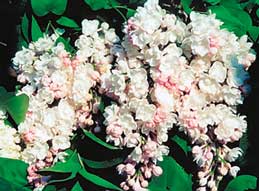
Lilac variety L. A. Kolesnikova Beauty of Moscow.
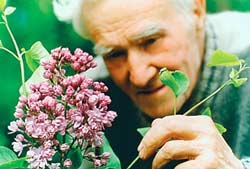
Medicinal properties of lilac and contraindications
The hill is covered with graceful snowdrops with their white nods and winter aconite clinging to its frilled collar and merry yellow flowers. Amidst this sea of bulbs, find a striking patch of leafy foliage and yellow flowers. Around the Ice Terrace are large white snowflakes that put on a show, and in the Visitor Center and the Quarry Garden, witch hazels are still blooming in shades of yellow and bronze.
Thousands of bright yellow flowers of adonite and winter aconite bulbs live in the jar, as well as early flowering dogwoods. Countless snowdrops bloom here, as well as throughout the garden. This color scheme is accented with crocus in shades of purple and lavender. The blue glory of snow begins to bloom in the Quarry Garden, along with yellow kizel-cherry kizels.
In the hands of a caring owner, the lilac is simply transformed. In the photo - I. F. Strekalov, the creator of a unique lilac garden in the city of Solnechnogorsk near Moscow (see "Science and Life" No. 5, 2001).
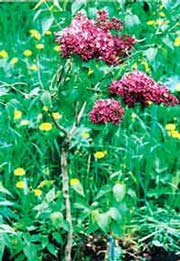
Grafted lilac blooms quickly - already in the second year.
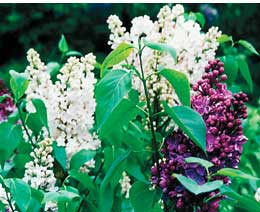
The "yellow phase" has only just begun to fade as the bright yellow flowers of winter aconite and adonite give way to blooming blue creaks and the glory of snow. Crocuses and daffodils can also be found in the Quarry Garden. There are also early miniature daffodils, lavender and white crocus, and yellow dogwood-cherry dogwoods in full bloom. In the Quarry Garden, you can find yellow carnelian cherry dogwoods in bloom with yellow daffodils and blue snow glory.
The eastern terrace of the museum's lawn is filled with the blue glory of snow, and fragrant white winter honeysuckle and yellow winter jasmine are nearby. This combination of bulbs is sown throughout the garden and is accented with pale yellow from dogwood-cherry dogwood, early forsythia and daffodils. Pale yellow winter nuts and lavender and pink Korean rhododendrons just break the bud along with corydal lavender and white and burgundy rose. Walk to the Quarry Garden to see yellow daffodils and coridals and Azaleva Woods to see pale pink rhododendrons.
Two varieties of lilacs were grafted on one bush: the domestic Marshal Zhukov and the French Excellence.
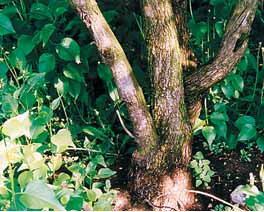
Long-lived lilac. This tree is about 40 years old.

Lilac cut.
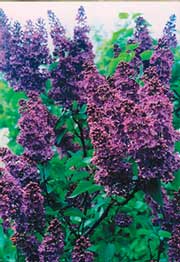
throughout Winter city you can enjoy yellow forsythia and pink cherry blossoms, pink and white magnolias, and beautiful daffodils just start to color the hills. This week the garden is full of color. White and pink magnolias are in full bloom along with spireas, quince and cherry blossoms. These colors can also be found in the Pinetum along with the pink flowers of the royal azaleas. While in Pinetete, don't miss the Queens Walk, which is lined with pink, salmon, white and red varieties.
Throughout the garden, there are thousands of daffodils in bloom, along with such spring treasures as early blooming rhododendrons, coridals, Pachysandra natives, and more. It's time to come to Winterthur and enjoy the early spring blooms. White and pink magnolias and pink cherries are in full bloom, along with native dogwoods and red-brown powders ready to pop. Virginia bluebells, lavender and white Italian windmills, yellow forsythia and lavender rhododendrons can be bloomed throughout the garden.
Pleases with its flowering and aroma of lilac varieties Red Moscow and Hydrangea (below).
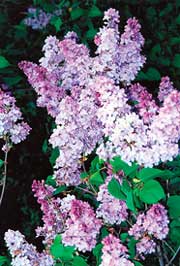

Lilac cuttings prepared for planting. They are stuck into the sand shallowly so that they barely hold on. With subsequent watering and spraying, they are drawn inward.
Lilac as a symbol of spring beauty in art
Make a special trip to Sunny Garden to see flowering shrubs such as white spirea, flowering quince and early lilac. Note the deep pink crabapple on the edge of the Pinetum with a beautiful drift of pale blue star color nearby. Front Drive, as well as Magnolia Bend and Sycamore Hill, have impressive daffodil drifts. Spring is a great time to relax and have fun in the Winterthur garden! Spring is in full bloom in the garden and at the center of it all is the Sunny Garden.
Growing a flowering lilac bush is not so easy. You have to master the various wisdoms of its cultivation.
WHICH SEEDLINGS TO BUY
A few years ago, it was almost impossible to buy varietal lilacs. We were content with a more or less "good" one taken by a layer from a neighbor. Now in the capital and regional centers any planting material, including lilac, is sold not only in the short period of April planting, but also in May-June in plastic pots with a closed root system. And such plants can be planted at any time, from spring to late autumn.
The lavender of the early bloom of the lilac is paired with a sea of pinks and whites, as spirals, rhododendrons, cherries, viburnums and crabs are all in full bloom. In Pinetum, the shade of ancient evergreens is illuminated by white spireas and pearls and delicate pink royal azaleas. The Quarry Garden has many bulbs still in bloom, with primroses just beginning to bloom.
There is color and surprises to be found throughout the garden with red stocks, Virginia bluebells and trills in full bloom, and beloved kizas are starting to come into bloom. Also in bloom are Virginia Bluebells, White and Blue Italian Windcatcher, Yellow and White Trillions, Blue Jacob's Ladder and Liven Phlox. The sunny garden is at its peak with cascading white spiria, fragrant viburnums and lilacs. Pinette has Magnificent white pearls and crabapps that will come in bloom.
Varieties, however, are not as many as we would like. Basically - French selection (Charles Joly, Buffon, Madame Lemoine and others), although sometimes domestic ones appear, bred by our compatriot, breeder Leonid Alekseevich Kolesnikov (Valentina Grizodubova, Sensation, Alexei Maresyev). Each of them is good in its own way. However, the problem of choice remains, but rather not varieties, but the seedlings themselves. The market offers seedlings propagated by grafting on lilac seedlings, or own roots obtained by rooting cuttings. There are also those that are "born" in laboratory test tubes - by the method of tissue culture (see "Science and Life" No. 5, 2001).
Azaleas will be at their peak in the next week or two, but there is plenty to see all through the garden. The garden is full of color this week as villages, viburnums, rhododendrons and azaleas are in full bloom all over the estate. However, the beautiful azalea show continues at Azala Woods, where eight acres of white, coral, pink and red varieties remain in full bloom along with peach and salmon rhododendrons. These colors stand out with lavender phlox and Spanish bluebells in flower on the wooded floor.
Azalea forests should be at their peak for at least a week. In the Solar Garden, the theme remains white and lavender with snowy viburnums, lilacs and princess flowers in bloom. On Oak Hill, bright red azaleas and flame buoys are paired with lilacs and gold, white and pink native azaleas, many of which are also quite fragrant. Azaleas still make a show in every part of Winterthur. Azalea Woods is alive with pink, lavender, deep red and white azaleas, planted with Spanish bluebells and a lavender rocket.
And each of them has its pros and cons. For example, own-rooted lilac is convenient in that it is winter-hardy and forms low, but bushes that grow strongly in width. All the growth that appears in such bushes is varietal, although it is also desirable to remove it. But do not throw it away, but plant it as varietal seedlings. Nevertheless, this lilac also has a significant drawback: compared to the grafted one, it blooms 3-4 years later.
Terry lilac varieties - names and photos
The quarry garden reaches its peak with wild columbines and early primroses in shades of yellow, orange and pink. In Sunny Garden, Sycamore Hill, and the Oak Hill districts, the last fragrant lilacs are still in bloom, along with white snow globe fireplaces. The primroses are still colorful in the Quarry Garden in shades of yellow, pink and orange. Be sure to take a walk and enjoy the interesting textures of ferns, hostas, daylilies and other delights of the Winterthur woodlands. As summer begins, the Quarry Garden is full of color with primroses in shades of orange, yellow and lavender.
Lilac, grown by tissue culture, can also be called own-rooted, only its quality is higher; it is a super-super-elite, virus-free, healthy and rejuvenated. However, in the first two years, this lilac develops rather slowly and blooms no earlier than in the 5-6th year.
Grafted lilac, in addition to a quick entry into the flowering period, is good because it is easy to form on a high stem. The most durable is the one that is grafted on wild lilacs. But at proper fit lilac on any rootstock can become a long-liver.
"SECRETS" OF LANDINGLilac is unpretentious, frost-resistant and drought-resistant, but, like many garden plants, its roots cannot stand stagnant water. Even short-term flooding causes their death. Therefore, when groundwater occurs one and a half to two meters from the surface, it can only be planted in high flower beds.
The soil should be water and breathable, loose, fertile, preferably loamy, slightly acidic, neutral or slightly alkaline. The place is chosen closed from the wind, sunny, although slight shading is possible.
Grafted or standard plants are planted two to two and a half meters from one another, and those formed in the form of a bush - three, since over the years they occupy a considerable area.
The diameter and depth of the planting pit is 40-50 cm, on heavy clay soils it is deeper, with drainage from broken bricks and crushed stone and coarse sand from above. The pit is filled with a nutrient mixture from the upper fertile layer of the earth with humus or compost, where a glass of superphosphate and a half-liter jar of wood ash are added evenly, with stirring. The intensity of plant development, the length of annual growth and, ultimately, the timing of flowering, and sometimes even the size and shades of inflorescence petals, depend on how successful this mixture of soil and fertilizers is.
Last year, the largest increase in biennial seedlings (60 cm each) in my garden was caused by the introduction of a fully soluble complex fertilizer Semitsvetik (90 g per large pit) into the planting pit in combination with watering the land when planting with a weak solution of potassium humate (the color of sleeping tea).
Fill the hole in advance, at least two to three weeks before planting, so that the nutrient mixture has time to settle a little. After that, a little soil is poured on it with a mound, without fertilizers, and a seedling pulled out of the pot is placed along with an earthen clod. When grafting on privet, the root neck and the grafting site itself (it is distinguished by cambial influxes on the trunk) are deepened 5-8 cm below the soil level so that the lilac gradually “passes over” to its own roots. Seedlings grafted on seedlings of wild lilacs are planted 3-4 cm above the root collar. This reduces the amount of growing wild shoots from the buds in the lower part of the rootstock. But it is even more expedient when they are all removed, carefully cutting off when planting with a sharp razor.
Own-rooted seedlings, including tiny ones, 10-15 cm high, obtained by clonal propagation, must be buried and mulched with breathable moist humus when planting. In this case, however, regular abundant watering is also important, especially immediately after planting.
Unlike most garden crops, lilac tolerates transplanting well even in summer time, only neat, with a large earthy clod, in cloudy weather and with abundant watering after transplantation. Breeder Leonid Kolesnikov successfully replanted adult lilac bushes after they bloom (!) In the phase of complete browning of the shoots.
Surprisingly, in a lilac transplanted in summer, unlike other plants, the leaves do not fade, the roots begin to grow rapidly, and its growth is not inhibited at all.
CARE TIPSAlthough lilac is considered an unpretentious plant, its successful development and close flowering time are entirely dependent on our constant care. For example, in a dry summer it is constantly watered in the first two years - no less than moisture-loving cucumbers, especially in June-July. And the lilac loves the shower: the dust from its leaves is washed off with a strong stream of water.
The best fertilizer for seedlings is potassium-phosphorus-calcium with the presence of trace elements such as magnesium, manganese and boron. All this is in the ashes from birch firewood, which also contributes to the rapid absorption of nitrogen. Of the complex mineral fertilizers, only those that do not contain chlorine are acceptable. They are often used in foliar top dressing - when spraying leaves. Noticeably activate biochemical processes that occur in plants, in particular, increase the number of large buds in inflorescences, zinc sulfate, magnesium and boron.
How lilac develops on "yeast" after fertilizing with infusions of organic matter - mullein, chicken manure, and even better - horse manure. On sale there are compact plastic canisters with concentrated manure extracts (by the way, odorless). One liter of this extract is enough for fast food a whole barrel of fertilizer solution.
SHAPING AND CUTTINGBoth grafted and own-rooted lilacs regularly remove all coppice shoots that appear at the root neck and in the near-trunk circle with a sharp pruner "on the ring". After all, the growth noticeably weakens the development of the main skeletal branches, their flowering, and even leads to drying out. But you can not remove these shoots, but plant them in another place.
They also cut out all the shoots of thickening that develop inside the crown. Spreading bushes, as it were, "compress", removing or shortening branches that go beyond a certain contour. At the end of summer, growth points are pinched off from growing shoots, which avoids their freezing.
It is also necessary to limit the excessively violent flowering of young 4-5-year-old plants, otherwise it will weaken them and have a negative impact on further development. At the same time, the barbaric cutting, and even more so the breaking out of flowering branches, not only interferes with the formation of a beautiful crown, but also disrupts regular flowering, it becomes periodic - with the omission of one season.
The formation of the bole is usually started in the third or fourth year of the life of a tree growing with one stem. For vertical fixation, it is usually tied to a peg. A spherical crown is formed at a meter height or slightly higher. All branches located below are removed "on the ring", as well as underdeveloped and intersecting, located inside the crown. The main shoot of continuation is shortened, ensuring the good development of lateral skeletal branches. However, they also have to be pinched in the summer, during intensive growth, in order to achieve the maximum compactness of the crown and the desired branching.
They cut not only the standard lilac, but also free-growing bushes, removing all small branches in the lower part of the skeletal branches, as well as shrunken, broken and ugly growing ones.
REPRODUCTION GREEN CUTTINGSIn June, it's time to do green cuttings - rooting shortly cut shoots from branches of the current growth. Rooting is carried out in a film, well-lit greenhouse or in a greenhouse at a temperature of 22-28 ° C and high, 85 percent, air humidity. The cuttings are planted in coarse-grained river sand or in its mixture with building perlite (1: 1), they are often sprayed with water and shaded from sunlight. It is easier to do this in low flat boxes covered with glass.
Far from all varieties of lilac take root well. According to the ability to form roots, they are divided into three groups: the smallest - with high rooting (85-100%): varieties Nadezhda, Morning of Moscow, Sholokhov, Hugo de Vries, Buffon, Paul Arno; with medium rooting (50-85%): Hydrangea, Red Moscow, Marshal Zhukov, Marshal Foch, Congo, Princess Clementine, Excellent; with weak rooting (1-49%): Alyonushka, Olimpiada Kolesnikova, Ludwig Shpet, Madame Lemoine. And finally, alas, the most numerous group that is not able to take root at all: all other domestic and foreign varieties, in particular the Beauty of Moscow, Poincaré.
It is necessary to root any cuttings skillfully, using a variety of "tricks". For example, it is known that cuttings from young, up to 6-8 years old, bushes take root much better, and they are cut not during the day, but early in the morning or in the evening, in no case allowing drying. To do this, cuttings cut with a clean sharp knife are wrapped in a damp cloth and planted as quickly as possible. In addition, it was noticed that in the later periods, at the end of June, not the middle or lower part of the green shoot takes root much better, but its top, with a pair of internodes.
To increase rooting, sometimes the part of the shoot where the cut is supposed to be completely isolated from the light is sometimes completely isolated. Moreover, they carry out isolation (this technique is called etiolation) right on the bush. To this end, two to three weeks before the expected date of grafting with black insulating tape, without tension, the lowest part of the shoots that have just awakened and begin to grow are wrapped in a ring. After a day or two, similar black marks are placed even higher, retreating two or three internodes. Periodically, the rings are corrected, and sometimes they are bandaged. After two or three weeks, when the bandaged sections of the overgrown branches turn white, the insulation is unwound and cross sections of the cuttings are made under the etiolated sections. It is from them that the roots will develop in the future.
Noticeably increases the effectiveness of etiolation is another "trick" that can be used, though next season. In late April - early May, branches with swollen buds are loosely covered with a bag of black polyethylene or carefully wrapped with any other light-insulating material, such as foil. Three weeks later, when etiolated whitish shoots are formed, the coating is removed and rings of black tape are immediately applied.
Promotes the root formation of green cuttings and a simpler procedure - their pre-treatment in an aqueous solution of biologically active stimulants. The best known is heteroauxin (indoleacetic acid). Two tablets of this drug (0.2 g) are dissolved in a liter of warm water and the cuttings are immersed in it for 14-16 hours, covering them with a jar or plastic bag on top. According to the head of the laboratory of physiology of the Main Botanical Garden of the Russian Academy of Sciences L. V. Runkova, the root formation is doubly accelerated by the treatment of cuttings with an aqueous solution of heteroauxin with the addition of Zircon (0.5 mg - 5 ampoules - per liter of water).
After rooting, the cuttings begin to gradually accustom to the outside air, and then transplanted into loose fertile soil. A flowering plant is formed from them in four to five years.
information bureau
Lilac rejuvenation
An old, weakened lilac bush with crushed flowers can be rejuvenated. First of all, old trunks with peeling bark are carefully cut out. Every year, during the dormant period, the branches of the old growth are shortened by one third. Rotted manure and a little bone meal are introduced into the root zone of the bush.




